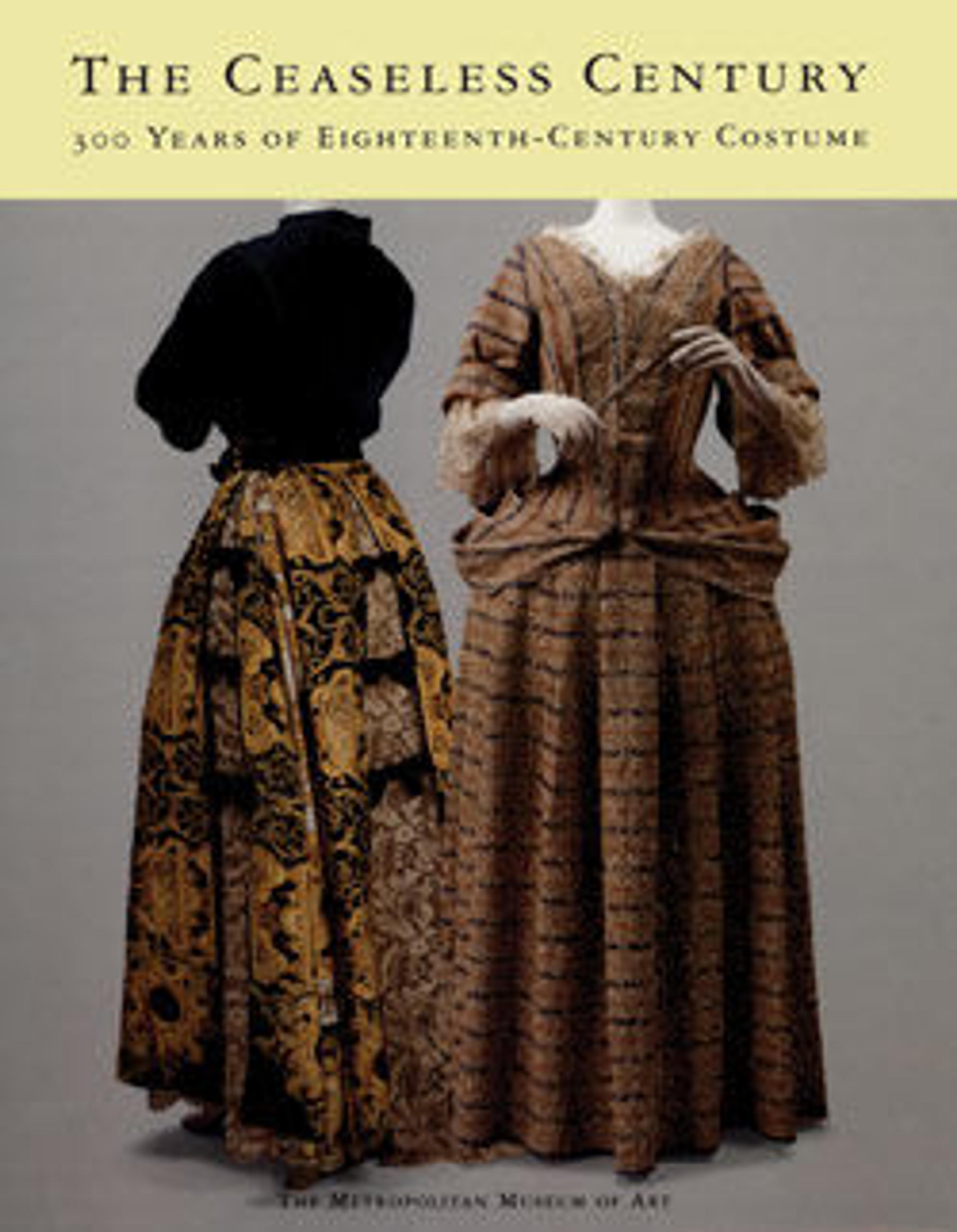Robe à la française
Standard European silhouettes of the eighteenth century accommodated a world of change and specifically a changing world dominated by new textile techniques from Asia and the Middle East. This French textile emulates ikat (a technique in which yarns are tie-dyed before weaving) in a manner then known as a result of a geographic mistake as chiné. The softened edges of the ikat do not mitigate a bold textile design, nor do they entirely surrender to the authority of the Western shaping. Pinked-edge pleated and ruched self-fabric (see detail) trace the form of the open robe. An eighteenth-century template of dress is all but unchanging, yet the influence of new material requires a syncretism. In terms of eighteenth-century revivals, it is important to recognize how much the classic forms of eighteenth-century dress accommodated translations into arresting new textile forms in the 1760s and even the new textiles in the cottons of the 1780s.
Artwork Details
- Title:Robe à la française
- Date:1760–70
- Culture:French
- Medium:silk
- Credit Line:Purchase, Irene Lewisohn Bequest, 1960
- Object Number:C.I.60.40.2a, b
- Curatorial Department: The Costume Institute
More Artwork
Research Resources
The Met provides unparalleled resources for research and welcomes an international community of students and scholars. The Met's Open Access API is where creators and researchers can connect to the The Met collection. Open Access data and public domain images are available for unrestricted commercial and noncommercial use without permission or fee.
To request images under copyright and other restrictions, please use this Image Request form.
Feedback
We continue to research and examine historical and cultural context for objects in The Met collection. If you have comments or questions about this object record, please contact us using the form below. The Museum looks forward to receiving your comments.
